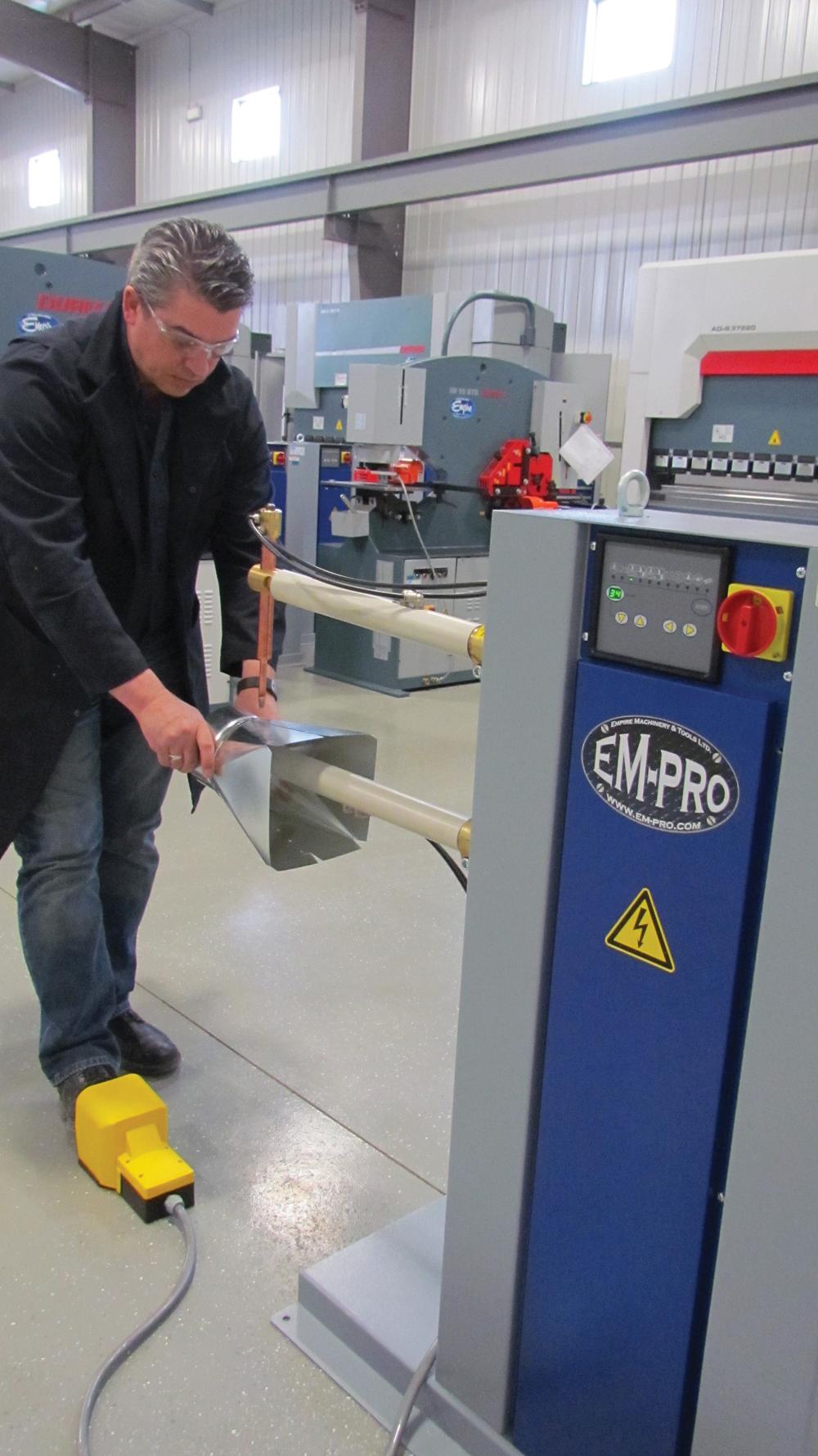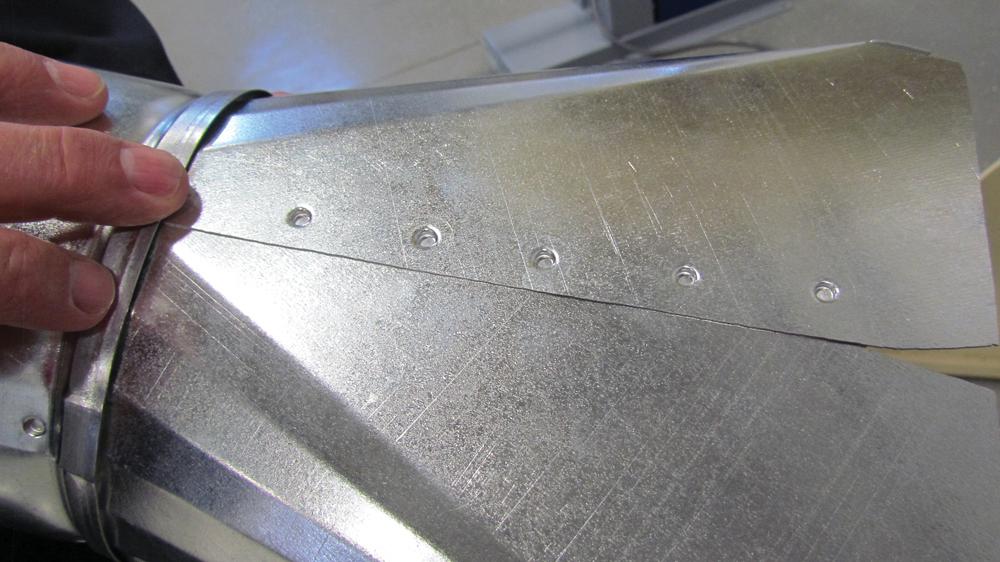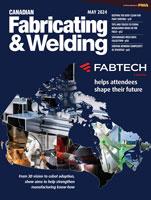- FMA
- The Fabricator
- FABTECH
- Canadian Metalworking
The pros and cons of spot welding vs.clinching
- By Rick McLean
- UPDATED May 18, 2023
- September 2, 2016
Resistance spot welding, which the automotive industry adopted in the 1930s, is still the industry standard for many joining requirements. It is a process by which metal surfaces are joined by the heat obtained from resistance to electric current.
However, clinching, which is a mechanical process of joining metal together, has become a viable alternative for certain applications. Each method has pros and cons; it’s up to you to decide which is right for your production.
Spot Welding Pros and Cons
The most significant benefit of spot welding is the initial purchase price of a spot welding machine; it is about half the cost of an entry-level, floor-model clinching machine.
The strength of a spot weld is excellent when the process is done right, with clean “dressed” tips and optimal squeeze, heat, and weld time settings. If a flush surface is required on the finished piece, spot welding is your best option as clinching creates a dimple on one side and a protrusion (button) on the other.
Spot welders come in different configurations, including suspended machines, floor models, foot-operated, and air-operated, as well as a variety of arm lengths and tip holder configurations to suit almost any application.
A drawback of spot welding is that testing the weld’s strength is difficult; there is no easy way to identify if a good solid weld was formed other than its visual appearance or to destroy the part to make sure the proper molten nugget was formed during the heat process.
Due to the intense heat required to melt the metal together, the surfaces of the material are burned and become porous, which invites rust if they are not primed or painted soon after. Spot welding prepainted metal destroys the paint, requiring an expensive secondary operation.
Spot welding dissimilar metals, such as aluminum to steel, is difficult, if not impossible.
Recirculating cooling water is required to cool the copper tips on the spot welder, which requires maintenance. Tip dressing or filing is also required for optimal tip contact, and this can be time-consuming.
Some hazards are involved with spot welding. For instance, an electromagnetic field is emitted and can be problematic for those wearing pacemakers. Spot welding also creates sparks and fumes, so a clean work area is essential, and safe work procedures for operators must be in place.
As high heat is required, some materials may be prone to warping during the process as well. So although spot welding is ideal for certain applications, there are a variety of reasons one might want to consider an alternative process.
Clinching Pros and Cons
One of the main benefits of clinching is that safety hazards are avoided. Most clinching machines are pneumatic and require no electricity, therefore, no electromagnetic fields are created. No sparks or fire hazards are present and there is no thermal stress to the part. No fumes are given off during clinching, and galvanized coatings, some plastic coatings, and even prepainted steel coatings are preserved.
Testing is easy and nondestructive with clinching; a quick measurement of the formed button tells the operator if any adjustments need to be made.
As no tips have to be dressed, production downtime is reduced and tooling maintenance is lowered. Tooling adjustments don’t need to be made unless the material is changed, and often many materials can be joined with the same die set.
Unlike spot welding, clinching has the ability to fasten dissimilar materials; clinching aluminum to steel is possible. Also, prepainted and thinly coated materials can be clinched without causing any surface destruction.
A drawback of clinching is that it has about 80 per cent of the strength of an ideal spot weld. Also, because clinching leaves an impression on one side and a button head on the other, the finished surface is not flush.
Although clinching does not require electricity to run, an air compressor is required for most machines.
Last, tooling on a clinching machine requires a larger contact area (approximately ¾ in.) to be able to complete its cycle, compared to about ¼ in. for a spot welder.
When to Use Spot Welding or Clinching
Spot welding and clinching processes both work well when performed properly.
Clinching requires the use of a more rigid machine and tool design criteria, primarily due to the tight joint specifications and high tonnages needed. Thus, compared to a traditional spot welder, a clinching machine has a higher initial investment.
Spot welding is a more flexible process, with a variety of machine and arm configurations to fit a variety of production requirements. If working with similar basic metals, the resistance welding process offers the best appearance, strength, flexibility of design, and initial machine cost.
If joining is required for prepainted or dissimilar metals, or if a cleaner production process is a priority, clinching must be considered.
Rick McLean is a vice president at Empire Machinery & Tools Ltd., 800-665-8089, www.empire-machinery.com
subscribe now


Keep up to date with the latest news, events, and technology for all things metal from our pair of monthly magazines written specifically for Canadian manufacturers!
Start Your Free SubscriptionAbout the Author
- Industry Events
MME Saskatoon
- May 28, 2024
- Saskatoon, SK Canada
CME's Health & Safety Symposium for Manufacturers
- May 29, 2024
- Mississauga, ON Canada
DiPaolo Machine Tools Open House 2024
- June 4 - 5, 2024
- Mississauga, ON Canada
FABTECH Canada
- June 11 - 13, 2024
- Toronto, ON Canada
Zoller Open House & Technology Days 2024
- June 12 - 13, 2024
- Ann Arbor, MI
























